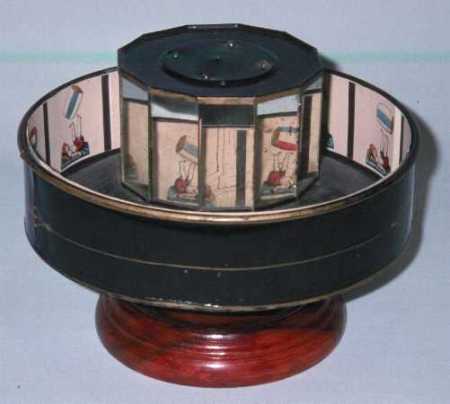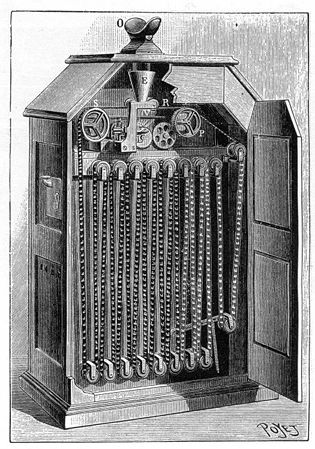CRITICAL STUDIES: Animation Timeline – Victorian Parlour Toys
Here’s a brief history on the methods used for animation back in the 1800’s. Various wacky devices were used, growing more and more advanced (with the exception of the flipbook) as the years went by; firstly, we have the Thaumatrope(1824). This is a simple device for tricking the eye into seeing a combination of two pictures, where in reality they are simply two drawings on either side of a circular piece of paper. quickly twirling the strings with the fingers makes the paper disk turn really fast and show each image really fast, and so both pictures are combined. This device demonstrated the ‘Phi Phenomenon’ – the theory that the eye can percieve motion within a series of connected images, rather than just several static images.
Next there was the Phenakistoscope(1831), which consisted of two circular disks, one with a series of drawings around the edge, and the other with viewing slots around the edge. They were spun in one direction on the same axis and when looking through the viewing slots, a moving image could be seen.
Next was the Zoetrope (It was invented by Ting Huan in China in 180AD, but updated and produced by William George Horner in 1834). The Zoetrope consists of a spinning cylinder with various viewing slots, through which the user can see the spinning pictures which are printed in succession on the inside and appear to move as the cylinder is spun.
The next, which is still commonly used today is the flip book (patented in 1868 by John Barnes Linnet). Which is where the pictures are printed onto paper, bound into a book and flipped with the thumb at high speed to create the illusion of movement. This is by far the easiest method of displaying animation to an individual.







Leave a comment